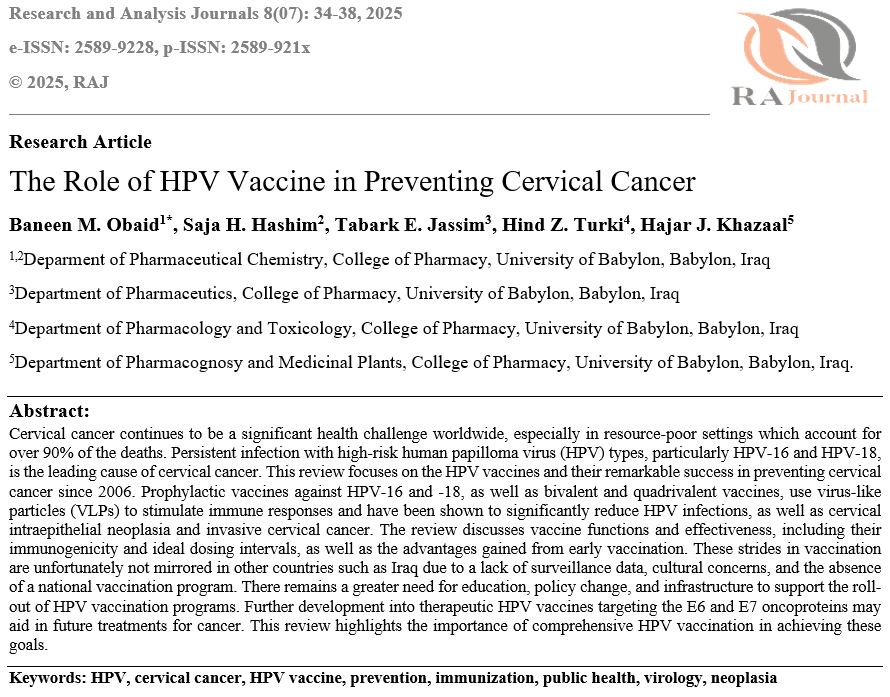
Downloads
Keywords:
The Role of HPV Vaccine in Preventing Cervical Cancer
Authors
Abstract
Cervical cancer continues to be a significant health challenge worldwide, especially in resource-poor settings which account for over 90% of the deaths. Persistent infection with high-risk human papilloma virus (HPV) types, particularly HPV-16 and HPV-18, is the leading cause of cervical cancer. This review focuses on the HPV vaccines and their remarkable success in preventing cervical cancer since 2006. Prophylactic vaccines against HPV-16 and -18, as well as bivalent and quadrivalent vaccines, use virus-like particles (VLPs) to stimulate immune responses and have been shown to significantly reduce HPV infections, as well as cervical intraepithelial neoplasia and invasive cervical cancer. The review discusses vaccine functions and effectiveness, including their immunogenicity and ideal dosing intervals, as well as the advantages gained from early vaccination. These strides in vaccination are unfortunately not mirrored in other countries such as Iraq due to a lack of surveillance data, cultural concerns, and the absence of a national vaccination program. There remains a greater need for education, policy change, and infrastructure to support the roll-out of HPV vaccination programs. Further development into therapeutic HPV vaccines targeting the E6 and E7 oncoproteins may aid in future treatments for cancer. This review highlights the importance of comprehensive HPV vaccination in achieving these goals.



